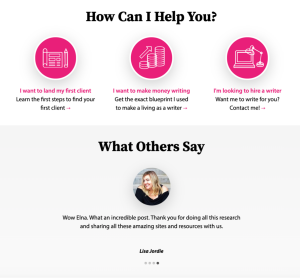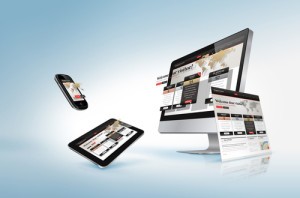Craft compelling content that guides your audience from initial interest to confident purchase, enhancing connection and conversion.
Ever landed on a website, ready to explore, only to be met with a loud “BUY NOW!” before you’ve even found your bearings? It’s jarring, right?
Now, think about a different welcome that greets you with open arms, asking, “What are you working on?” and guides you with quizzes and insightful articles. Suddenly, you’re not just a visitor — you’re part of a community, ready to engage and even purchase.
This contrast is all about understanding the human touch in digital spaces. We’re crafting experiences, not just transactions. Our goal is to guide our audience from the first hint of interest to a confident purchase without being pushy. Let’s dive into how we can make our content seen and felt, guiding our audience smoothly from curiosity to conversion.
Understanding the customer journey
Before we explore strategies, it’s crucial to grasp the essence of the customer journey. Think of it as navigating a new territory. This journey is marked by distinct stages that reflect the evolving mindset of your prospective customer:
Awareness
At this initial stage, your audience realizes they have a need or a problem but might not be fully aware of the solutions available. They’re seeking information, so don’t give them a sales pitch. The goal is to educate and inform.
Consideration
By now, your potential customers are evaluating their options. They’ve recognized their need and are actively searching for the best solution. This is the time to differentiate your offering and showcase how it aligns with their specific requirements.
Decision
This is the critical moment when choices are weighed and a decision is near. Your audience is ready to make a purchase but needs that final piece of convincing to ensure they’re making the right choice. Here, the focus shifts to persuasion, highlighting value and addressing any remaining concerns.
Each stage requires a tailored approach to content to guide your audience closer to a decision. By understanding and respecting this journey, you can create more effective, targeted content that meets your audience exactly where they are.
Stage 1: Crafting content for awareness
At this stage, your potential customers are just realizing they have a need or problem but aren’t necessarily ready to buy. They’re looking for information, guidance and maybe empathy for their situation.
Your job? To be the lighthouse that guides them through the fog, not the billboard that’s shouting for their attention when they don’t even know where they’re going yet.
Blog posts
Start with crafting blog posts that answer the “What is…” and “How to…” questions related to your industry.
For example, if you’re in the eco-friendly products space, a blog post titled “What Are Eco-Friendly Products and Why Do They Matter?” can educate readers about the importance of sustainability and introduce them to the concept of green living without pushing your products directly.
Infographics
Infographics are perfect for visually breaking down complex topics into digestible, easy-to-understand pieces. Imagine you sell software that helps businesses reduce paper waste.
An infographic illustrating the environmental impact of paper waste and how digital solutions can help could be a powerful way to raise awareness.
Videos
Video content is incredibly engaging and can be used to gently introduce your brand and its values. For example, a video tour of your sustainable office can humanize your brand and subtly promote your commitment to eco-friendliness without a hard sell.
Tell stories
People love a good story. Stories evoke emotions, build connections and often drive a point home more effectively than any statistic. For awareness content, storytelling can take your message from being merely heard to being felt and remembered.
- Customer testimonials. There’s something incredibly powerful about hearing customers share their journey of realizing they needed a solution like yours. Create video testimonials or written case studies focusing on their problem, the search for a solution and how they felt after discovering your product. This can make potential customers think, “Hey, that sounds like me!”
- Case studies. While testimonials are great for emotional appeal, case studies can add a layer of depth and detail that some of your audience will appreciate. Say you offer a digital marketing platform. A case study on how a small business increased its online engagement by 200% using your platform provides tangible proof of your product’s value. Use real data and quotes from the business owner to make it as relatable as possible.
At this stage, focus on educating, informing and connecting — not selling. Demonstrate your understanding and expertise to help your audience through their challenges. You’ll foster trust by being helpful and resourceful, drawing people closer to your brand. When they’re ready to explore their options, they’ll remember who guided them there.
Stage 2: Nurturing through the consideration stage
Your audience now knows they have a need and are looking at their options. This is where your potential customers are looking for clarity and differentiation. Here’s how you can provide it:
- Product comparisons. Create detailed comparison guides that pit your product or service directly against others in the market. For example, if you’re in the project management software space, a blog post titled “Project Management Software Showdown: Our Tool vs. The Other Guys” could break down features, pricing, user interface and customer support. The key is to be objective — highlight areas where competitors might shine but clearly demonstrate your unique advantages.
- Use cases. Tailor content that showcases your product, solving specific problems in different scenarios. Let’s say you sell eco-friendly cleaning products. A series of articles or videos demonstrating how your products tackle tough stains in homes, offices and industrial settings can vividly illustrate the versatility and effectiveness of your offerings.
Deep dives
For those in your audience who crave detail and want to thoroughly understand their options before committing, deep-dive content is your best friend.
- Webinars. Host webinars that introduce your product and educate your audience on broader topics related to your industry. For example, if your business offers a cybersecurity solution, a webinar on “The Latest Cybersecurity Threats and How to Protect Your Business” can attract viewers at the consideration stage. Incorporate how your product addresses these threats, adding value to the educational content.
- E-books and detailed guides. These are your opportunity to show off your expertise and the depth of your product’s capabilities. Consider creating an e-book like “The Ultimate Guide to Sustainable Living” if your business focuses on eco-friendly products. Within this guide, you can subtly integrate how your products fit into the larger picture of a sustainable lifestyle.
- Tech specs and case studies. Some people love to geek out on the specifics. Provide detailed tech specs for those who want them. Also, case studies that go beyond testimonials and dive into the nitty-gritty of how your product was implemented and the exact results it achieved can be compelling at this stage.
In the consideration stage, aim for your content to act like a knowledgeable friend — guide, don’t push. Strive to be informative and helpful, which boosts your potential customers’ confidence, leaving them feeling well-informed and empowered to make a choice when they’re ready.
Stage 3: Sealing the deal in the decision stage
Your customers are on the brink of making a decision. This is where we need to be supportive and strategic, helping them confidently take that final step. Here’s how to wrap things up in a way that feels both rewarding for them and successful for you.
Show the full picture
Think of this as a test drive before buying a car. You wouldn’t purchase without knowing how it feels on the road, right? The same principle applies here.
- Demos. If your product is digital or service-based, offer a real-time demo showcasing its capabilities. For example, if you’re selling an email marketing platform, a live demo that walks potential customers through creating a campaign, analyzing data and using automation features can be incredibly persuasive.
- Free trials. A step beyond demos, free trials let your customers experience the product or service in their own environment, on their own terms. It’s like taking the car home for a week. Ensure the trial is long enough for them to see the value but short enough to be encouraged to decide promptly.
- Money-back guarantees. This reduces the risk for the buyer and shows that you stand behind your product. It says, “We’re so confident you’ll love what we offer that we’re willing to put our money where our mouth is.” This level of confidence can be the deciding factor for many customers.
Create a sense of urgency (wisely)
This is about giving a little nudge, not pushing them off a cliff. The goal is to encourage action without causing stress or pressure.
- Limited-time offers. These can be very effective if used sparingly and genuinely. For instance, a special discount that expires in 48 hours can motivate indecisive customers to commit. Just make sure the offer is compelling and the time frame is reasonable.
- Exclusive bonuses. Offer something extra that’s only available for a limited time or to a limited number of customers. This could be a complimentary add-on service, an additional month of use or a free gift with purchase. For example, if you sell software, you could offer a free personalized onboarding session for anyone who signs up within the next week.
In the decision stage, focus on dispelling doubts and highlighting your offering’s value. Offer demos, free trials or money-back guarantees to let customers experience your product’s benefits firsthand. Use urgency wisely to provide compelling reasons to act, ensuring it feels like an opportunity rather than pressure.
Making every piece of content count
Crafting content that converts is all about alignment — ensuring every blog post, infographic and video you create serves a purpose for your audience at the right moment.
Audit your content through the lens of the customer journey. Does your awareness-stage content inform and engage without pushing for a sale? Are you providing clear, comparative insights during the consideration stage? And when it comes to decision time, does your content reassure and encourage action?
Keep it simple, genuine and focused. Remember, successful marketing isn’t just closing a sale but also opening a relationship. Be the guide your audience needs and the conversions will follow.
The post How to create content for every stage of the customer journey appeared first on MarTech.
MarTech(5)





